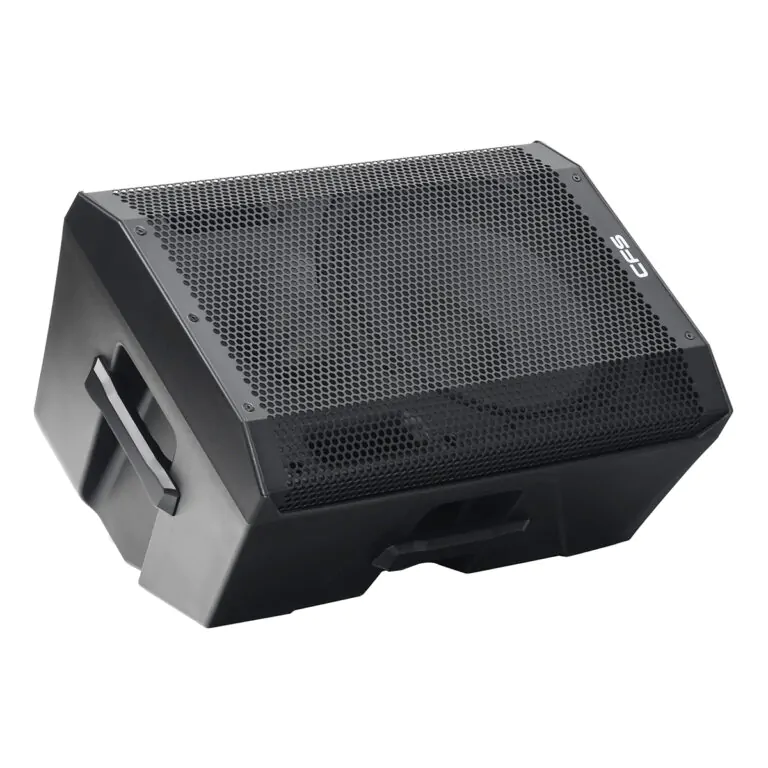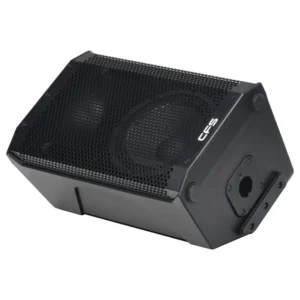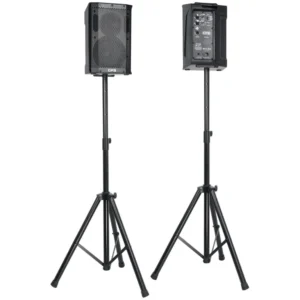Good data collection depends on more than strong survey questions. Clear sound shapes how participants understand instructions and stay engaged. For research teams, choosing the right loudspeaker manufacturer is a practical step toward professional, inclusive sessions. This guide explores how reputable makers support questionnaire projects, what features to evaluate, and how to create a welcoming acoustic setting.
Why a Loudspeaker Manufacturer Matters for Survey Projects
A dependable audio partner ensures voices remain crisp in meeting rooms, classrooms, or open-air workshops. Reliable equipment protects facilitators from repeating themselves and lets participants focus on sharing thoughtful feedback.
Modern loudspeakers also integrate with tablets or laptops running survey platforms. This connection reduces friction: no need for complex AV systems, yet everyone hears prompts evenly.
Key Qualities of a Trustworthy Loudspeaker Manufacturer
Consistent Acoustic Design
Top brands balance frequency response for speech clarity. They emphasize midrange precision while controlling distortion.
Build Quality and Materials
Survey environments can shift between offices, gyms, and courtyards. A rugged enclosure with scratch-resistant finishes supports long-term value.
Transparent Specifications
Manufacturers who publish sensitivity ratings, impedance, and coverage angles give buyers confidence in matching gear to venue size.
After-Sales Support
Fast warranty service and readily available replacement parts protect your investment.
Matching Loudspeakers to Questionnaire Formats
Focus Groups: Compact models with wide dispersion suit roundtable layouts.
Community Polls: Portable, battery-powered speakers simplify outdoor logistics.
Corporate Research: Ceiling-mount solutions create a clean look in boardrooms.
Selecting devices based on session style avoids unnecessary cost or underperformance.
Integrating Loudspeakers with Digital Survey Platforms
Many free and paid survey apps (Google Forms, SurveyMonkey, Qualtrics) depend on participants hearing introductions or recorded scenarios. Proper loudspeaker placement:
Supports respondents with mild hearing loss.
Encourages relaxed posture — no need to lean in.
Reduces moderator fatigue in long workshops.
With Bluetooth or wired links, audio can be managed from a single console.
Installation & Setup Tips
Positioning for Clarity
Aim speakers slightly above head height, angled toward seats. Avoid walls that reflect excessive sound.
Calibrating Volume
Moderate levels preserve focus while protecting quiet atmospheres. Test with a short script before starting.
Safety Considerations
Use stable stands or wall mounts. Cables should be taped or routed away from walkways.
Ethical & Accessibility Benefits
Research benefits when all voices are valued equally. Choosing equipment from an ethical loudspeaker manufacturer often means better sustainability policies and more inclusive product design — adjustable volume ranges, clear user manuals, and repair-friendly parts.
Long-Term Maintenance
Store units in padded bags to prevent transport damage.
Keep grills dust-free for optimum sound.
Recharge batteries or check power supplies ahead of events.
Good care reduces breakdowns and protects data collection schedules.
Environmental Responsibility
Forward-thinking manufacturers adopt recyclable packaging, lead-free solder, and efficient drivers. Supporting them aligns your purchase with responsible research practices.
Common Buying Mistakes
Focusing only on price rather than acoustic needs.
Ignoring warranty conditions or spare-part availability.
Choosing bass-heavy entertainment speakers instead of models optimized for speech.
Avoiding these traps leads to smoother sessions and lower long-term costs.
Conclusion
A solid partnership with a capable loudspeaker manufacturer enhances every stage of survey work — from planning through to participant experience. Clear, respectful audio helps respondents feel heard, improving both data quality and trust in your research.
FAQ
Q1: What speaker power is enough for small survey rooms?
Around 20–40W continuous output covers up to 30 participants indoors.
Q2: Should I buy active or passive loudspeakers?
Active models (with built-in amps) simplify setup for mobile surveys. Passive units suit permanent installations.
Q3: How can I evaluate a manufacturer’s credibility?
Look for published specs, third-party reviews, and transparent warranty terms.
Q4: Can one loudspeaker model fit every survey format?
Not always. Venue size, audience number, and transport needs should guide selection.






**potent stream**
potent stream is engineered to promote prostate well-being by counteracting the residue that can build up from hard-water minerals within the urinary tract.
**boostaro**
boostaro is a specially crafted dietary supplement for men who want to elevate their overall health and vitality.
**prostabliss**
prostabliss is a carefully developed dietary formula aimed at nurturing prostate vitality and improving urinary comfort.
Am liebsten wähle ich Spiele mit hohem RTP-Wert (Auszahlungsquote). Denn je höhe dieser Wert ist, desto besser fallen meine Gewinnchancen aus. Rolling Slots Casino Die Präferenz für Spielautomaten liegt ganz beim Spieler. Viele Faktoren, einschließlich Auszahlungsprozentsatz, Geschichte, Benutzerfreundlichkeit, Einsatzbeträge, Jackpot-Verfügbarkeit und mehr, werden in diesem Prozess berücksichtigt. Der Vorteil bei Online Slots ist, dass du dich nie hintenanstellen musst. Dein Slot ist stets bereit für dich – also los zum Spielautomat deiner Wahl! Im Online Casino findet ihr die Slots diverser guter Anbieter. Welche Slots euch schlussendlich am besten gefallen, bleibt Geschmackssache. Wir haben uns auf jeden Fall Gedanken gemacht, welche Anbieter gute Merkur Alternativen darstellen.
https://digicorp.gr/book-of-the-fallen-von-pragmatic-play-review-und-serioses-spielerlebnis-2025/
Die Live-Casino-Funktion ist fantastisch! Es fühlt sich alles so realistisch an. In der besten Online Spielothek in Deutschland profitierst du immer samstags von Freispielen ohne Einzahlung mit unserer Aktion Verflixte 13. Book of the Fallen ist ein 5-Walzen-Slot mit 10 Gewinnlinien. Das Ziel ist es, gleiche Symbole auf den Linien zu sammeln, wobei der Entdecker das wertvollste Symbol ist. Das Spiel ist einfach zu verstehen, aber die Bonusmechanik fügt eine strategische Ebene hinzu. Du kannst deinen Einsatz zwischen 0,10 € und 100 € pro Spin wählen, was Flexibilität für verschiedene Budgets bietet. Den Bonus in Ihrem Casino-Konto aktivieren Seid ihr Fans der Autoplay-Funktion, müsst Ihr nach Casinos ohne die 5 Sekunden Regel Ausschau halten. In diesen Casinos könnt Ihr nämlich weiterhin eure Spielrunden automatisieren und eure Einsätze im Vorfeld einstellen. Auch Turbo-Spins lassen sich hier nutzen.
**energeia**
energeia is the first and only recipe that targets the root cause of stubborn belly fat and Deadly visceral fat.
**pinealxt**
pinealxt is a revolutionary supplement that promotes proper pineal gland function and energy levels to support healthy body function.
Buffalo King is een zeer hoge variantie gokkast. Schrijf u in voor onze nieuwsbrief om te profiteren van ons fantastische aanbod. Buffalo King Megaways biedt diverse bonus features die het spel extra spannend maken en je winstkansen aanzienlijk kunnen vergroten. De Max Megaways 3 gokkast bevat twee soorten scatter symbolen, namelijk de gouden scatter en de diamanten scatter. Deze worden beide in een koffer getoond. Met twee scatters tegelijk in beeld zal het 10 gratis spins bieden.Wanneer een ervan een Megascatter is, dan worden er 15 gratis spins gewonnen. Elke keer wanneer er een nieuwe scatter op de rollen verschijnt, zullen er 2 extra gratis spins toegevoegd worden. Buffalo King Megaways is heerlijk toegankelijk dankzij de minimale inzet van €0.20 per spin. Je hoeft geen High Roller te zijn om dit spel te kunnen spelen. Maximaal kan er €100 per beurt worden ingezet, dus de inzetmogelijkheden zijn flink. De maximale winst bedraagt 5.000 keer je inzet. Zoals je van ons gewend bent, speel je bij JACKS.NL altijd de best uitbetalende versie van een online gokkast. Dat is wel zo leuk! Probeer daarom nu Buffalo King Megaways bij JACKS.NL.
https://casafrosa.ro/mobilier/ontdek-de-online-gokmogelijkheden-van-0xbet-in-nederland/
Our climate is under considerable pressure. Although solving the climate problem requires large-scale action on a global scale, you can also do your part as an individual. One way to do this is by eating environmentally conscious food more often. Eating more plant-based (rather than animal-based) products, buying foods that have a lower environmental impact, and recycling food waste all contribute to lower greenhouse gas emissions and are therefore of value to the climate. Would you like to eat more sustainalby, or help someone eat more sustainably? Then try one of these strategies: CLARIAH PLUS, het Common Lab Research Infrastructure for the Arts and Humanities ontwikkelt een nationale digitale onderzoeksinfrastructuur ten behoeve van de geesteswetenschappen en sociale wetenschappen. CLARIAH PLUS richt zich met name op infrastructuur voor disciplines die teksten op de inhoud bestuderen (zoals letterkunde, geschiedenis, maar ook filosofie en theologie).
**breathe**
breathe is a plant-powered tincture crafted to promote lung performance and enhance your breathing quality.
**yusleep**
yusleep is a gentle, nano-enhanced nightly blend designed to help you drift off quickly, stay asleep longer, and wake feeling clear.
**zencortex**
zencortex contains only the natural ingredients that are effective in supporting incredible hearing naturally.